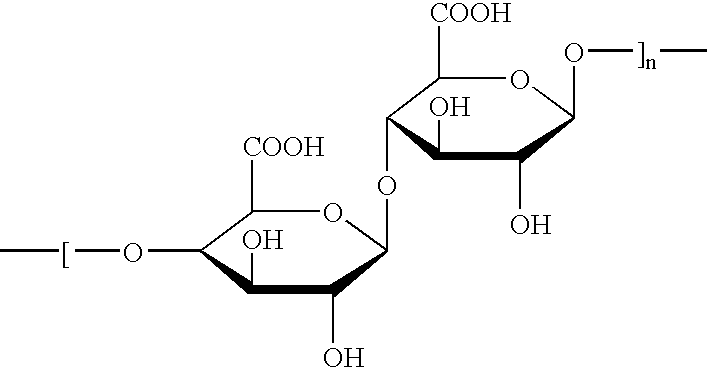Microcapsules and processes for making the same using various polymers and chitosans
- Summary
- Abstract
- Description
- Claims
- Application Information
AI Technical Summary
Benefits of technology
Problems solved by technology
Method used
Image
Examples
first embodiment
The microcapsules according to the present invention are intended for the production of surface-active compositions and, in a first embodiment, particularly for the production of cosmetic and / or pharmaceutical preparations such as, for example, hair shampoos, hair lotions, foam baths, shower baths, creams, gels, lotions, alcoholic and aqueous / alcoholic solutions, emulsions, wax / fat compounds, stick preparations, powders or ointments. These preparations may also contain mild surfactants, oil components, emulsifiers, superfatting agents, pearlizing waxes, consistency factors, thickeners, polymers, silicone compounds, fats, waxes, stabilizers, biogenic agents, deodorizers, antiperspirants, antidandruff agents, film formers, swelling agents, UV protection factors, antioxidants, hydrotropes, preservatives, insect repellents, self-tanning agents, solubilizers, perfume oils, dyes and the like as further auxiliaries and additives. Many of these auxiliaries were mentioned in detail in earlie...
example 1
In a 500 ml three-necked flask equipped with a stirrer and reflux condenser, 3 g of agar agar were dissolved in 200 ml water in boiling heat. First a homogeneous disperson of 10 g of glycerol and 2 g of talcum in ad 100 g water and then a preparation of 0.5 g of sodium alginate, 10 g of paraffin oil, 0.5 g of Phenonip.RTM. (preservative mixture containing phenoxyethanol and parabens) and 0.5 g of Polysorbate-20 (Tween.RTM. 20, ICI) in ad 100 g water were added to the mixture over a period of about 30 mins. with vigorous stirring. The matrix obtained was filtered, heated to 60.degree. C. and added dropwise to a 0.5% by weight chitosan solution (Hydagen.RTM. DCMF, Henkel KGaA, Dussledorf / FRG). To obtain microcapsules of the same diameter, the preparations were then sieved. The microcapsules proved to be stable in storage for 4 weeks at 40.degree. C. in the presence of surfactants.
example 2
In a 500 ml three-necked flask equipped with a stirrer and reflux condenser, 3 g of agar agar were dissolved in 200 ml water in boiling heat. First a homogeneous disperson of 10 g of glycerol and 2 g of talcum in ad 100 g water and then a preparation of 0.5 g of sodium alginate, 10 g of squalane, 0.5 g of Phenonip.RTM.) and 0.5 g of Ceteareth-20 in ad 100 g water were added to the mixture over a period of about 30 mins. with vigorous stirring. The matrix obtained was filtered, heated to 60.degree. C. and added dropwise to a 0.5% by weight chitosan solution (Hydagen.RTM. DCMF, Henkel KGaA, Dussledorf / FRG). To obtain microcapsules of the same diameter, the preparations were then sieved. The microcapsules proved to be stable in storage for 4 weeks at 40.degree. C. in the presence of surfactants.
PUM
| Property | Measurement | Unit |
|---|---|---|
| Weight | aaaaa | aaaaa |
| Length | aaaaa | aaaaa |
| Percent by mass | aaaaa | aaaaa |
Abstract
Description
Claims
Application Information
 Login to View More
Login to View More - R&D
- Intellectual Property
- Life Sciences
- Materials
- Tech Scout
- Unparalleled Data Quality
- Higher Quality Content
- 60% Fewer Hallucinations
Browse by: Latest US Patents, China's latest patents, Technical Efficacy Thesaurus, Application Domain, Technology Topic, Popular Technical Reports.
© 2025 PatSnap. All rights reserved.Legal|Privacy policy|Modern Slavery Act Transparency Statement|Sitemap|About US| Contact US: help@patsnap.com


